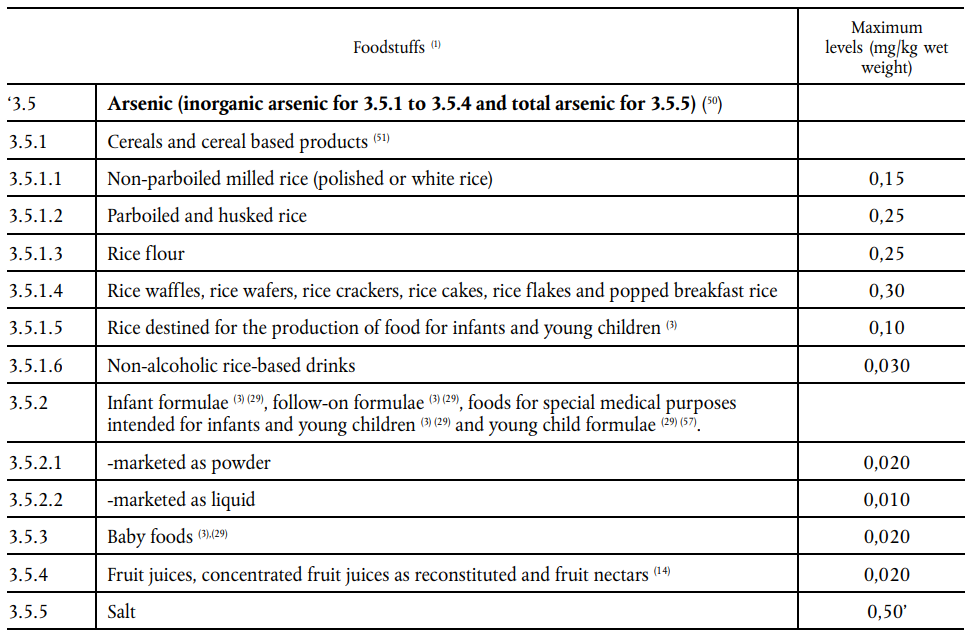Legislation | Inorganic arsenic in cereal, rice and babyfood
On 06/03/2023 the European Commission published regulation 2023/0465 regarding the maximum levels of inorganic arsenic in certain foods. The ML change concerns the following products. You can find a complete overview in the image included in this article or via the regulation itself.
- Cereals and cereal based products
- Rice and rice based products
- Baby food and infant formulae
- Fruit juices
The new limits will enter into force on 26/03/2023 and it is important to note that our analysis methods (ZMAS and ZMASI) will also cover this updated regulation.
Taking into account that certain foodstuffs covered by this regulation have a long shelf life, it was agreed that foodstuffs that were lawfully placed on the market before 26/03/2023, may remain on the market until their date of minimum durability or use-by date.
Background information
Arsenic is a ubiquitous metalloid present at low concentrations in rocks, soil and natural ground water. In addition, human activity has also contributed to increase the levels of arsenic in the environment through industrial emissions (mining, smelting of non-ferrous metals and burning of fossil fuels) as well as with the use of arsenic as part of fertilisers, insecticides or herbicides. Although dermal and inhalation exposure is possible, food and drinking water are the principal routes of exposure to arsenic
The scientific opinion identified high consumers of rice in Europe and children under three years of age, as most subjected to inorganic arsenic dietary exposure. Dietary exposure for children under three years old, including from rice-based foods, is estimated to be about 2 to 3-fold that of adults.
More information?
Should you have any further questions concerning this legislation change or our analysis methods for inorganic arsenic, do not hesitate to contact us.
- 0032 (0)9 330 10 13
- customercare.be@primoris-lab.com

